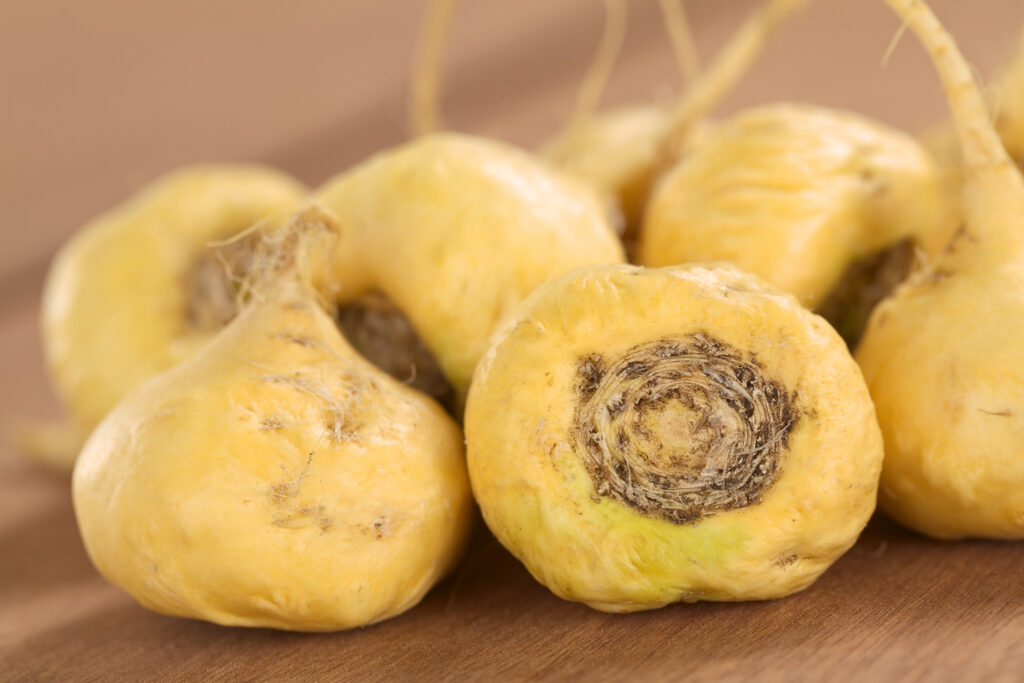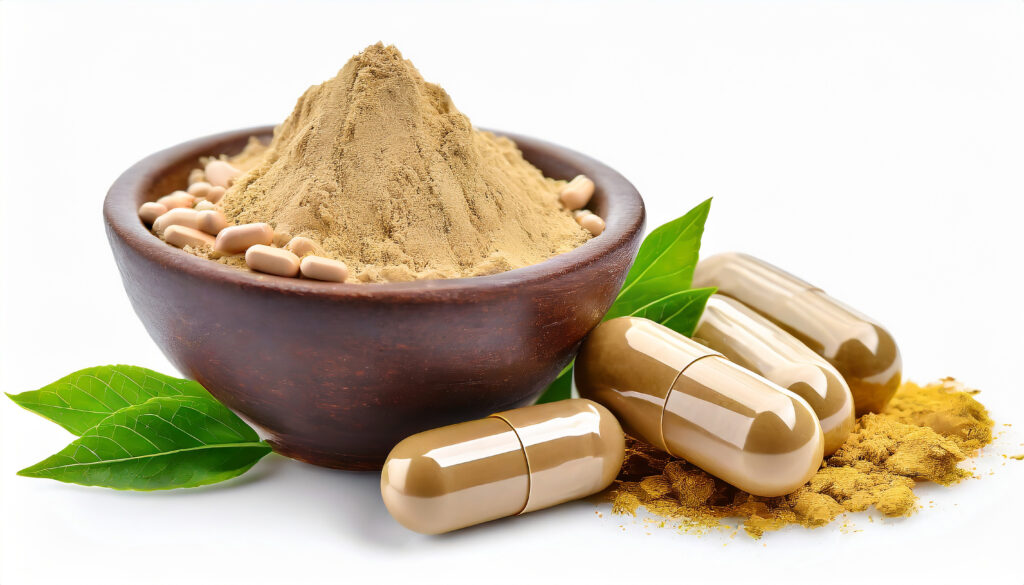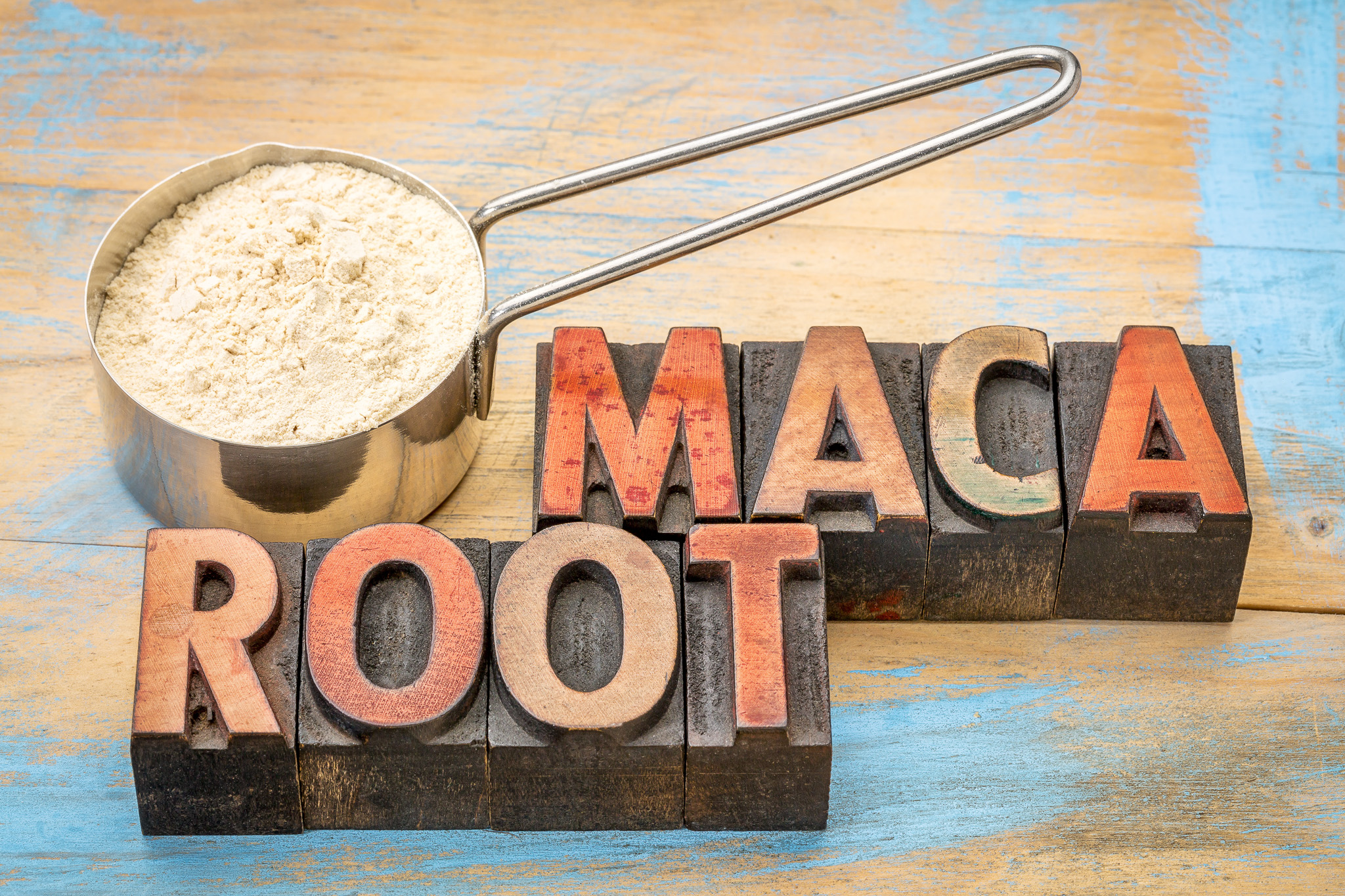Maca, also known as Lepidium meyenii, is a herbaceous plant belonging to the Brassicaceae family of mustards that is grown for its edible rootlike storage organ. The plant is indigenous to the central Peruvian Andes Mountains, where it grows at elevations of approximately 4,000 to 4,500 meters (13,000 to 14,800 feet). Because of its fleshy underground storage organ—a tiny taproot fused with a portion of stem called a hypocotyl—it is grown as a root vegetable. In traditional medicine, the plant is also utilized as an aphrodisiac and fertility booster. Maca “root,” which is touted for its health advantages, is shipped and offered for sale as powder.
Maca is typically planted as an annual. The plant grows low to the earth and is fairly compact because to its tough, windy, and cold growing environment. The first year’s broad base leaves might be whole or deeply lobed, and they are distinct from the second year’s thin leaves on the flowering stalks. Silicles are flat, spherical, dry fruits that bear seeds. The little, white, four-petaled flowers are placed in short spikes. The hypocotyls’ exterior skin has three color variations: yellow, red, or black. Yellow is the most prevalent.
In the highlands of Peru, maca was first domesticated between 2,000 and 1,300 years ago. Spanish settlers noted its use as a meal and for virility in the 1500s and 1600s. You may bake fresh maca and eat it like a delicious vegetable. Maca is often sun-dried until the hypocotyls become incredibly hard, at which point it may be preserved for a very long time. They can be boiled later to make a drink or oatmeal. The nutritional profile of dried maca is comparable to that of many cereal grains, with a high carbohydrate content and moderate levels of protein and fiber. Iron and iodine can be found in fresh maca. Young leaves can also be consumed as a vegetable, either raw or cooked.
Maca root is used as a herbal supplement to treat a range of illnesses, such as libido and fertility issues, osteoporosis, menopause symptoms, inflammatory disorders, and hormonal imbalances. Although the herb is not regarded as a stimulant, people frequently use it to improve their energy, stamina, and mental clarity. More thorough research is required, but there is some clinical evidence that it may boost sperm count and motility. You can take dried maca as a pill or capsule, or you can add it as a powder to baked products or smoothies.

May Help Boot Sexual function
The ability of maca root to boost libido is its most well-known advantage. This assertion is supported by some scientific data.
For instance, an earlier study from 2002. Trusted Source discovered that men’s libido was higher in those who took 1.5 or 3 grams (g) of maca daily as opposed to those who were given a placebo.
A review from 2010 found some indication that maca may increase desire was found in studies on maca and sexual functioning, according to a reliable source, although the authors advised that additional research is needed.
A 2015 investigation showed Maca root may lessen sexual dysfunction in postmenopausal women using antidepressants, according to a reliable source.
May Improve Female Sexual Function
Women on antidepressants may experience improved sexual functioning after taking maca. Over 50% of those using two different kinds of antidepressants report having sexual dysfunction that negatively impacts their relationships and quality of life. In one study, maca increased arousal, orgasm, satisfaction, and sexual interest. Postmenopausal women demonstrated the best outcomes.
One common reason people consume maca is for a caffeine-free energy boost. “While scientific studies haven’t been able to show exactly how maca boosts energy in the body, it does seem to have energy-producing effects in some people,” says Dr. Koffler.
While more scientific studies need to be conducted to confirm this connection, a small study of 175 people indicates a connection between maca and energy. In the study, people who took 3 grams of maca for 12 weeks reported experiencing more of an energy boost than people who didn’t consume maca. Because of this response, if you’re sensitive to herbs, it’s best to consume maca earlier in the day.

May increase overall health and energy
Maca is frequently taken for its caffeine-free energy boost. “Maca seems to have energy-producing effects in some people, but scientific studies haven’t been able to show exactly how it boosts energy in the body,” says Dr. Koffler.
Although further research is necessary to validate this association, a limited study with 175 participants suggests a relationship between maca and energy. Those who consumed 3 grams of maca over the course of 12 weeks reported feeling more energised than those who did not. It is better to take maca earlier in the day if you are sensitive to herbs because of this reaction.
The precise mechanisms by which maca modifies the body’s energy levels are probably not well understood, according to integrative medicine physician Siri Chand Khalsa, M.D. “There are a lot of factors that affect our level of energy; it’s not just one thing,” the speaker states, emphasizing that it’s challenging to attribute energy to a single herb because there are so many other aspects of living that are involved.
Potential risks of maca root
Although few users have reported adverse effects, health officials consider maca root and powder to be usually safe. These include sleeplessness, cramps, upset stomach, and moodiness. Furthermore, several female users claim that maca changed their menstrual cycles. There is insufficient evidence regarding the safety of maca, so those who are expecting or nursing should avoid using it.
Think of this adaptogenic superfood as a wonderful complement to your way of life; if you suffer from sadness, low energy, weakened immune, or hormone imbalances, it could be the missing piece.
